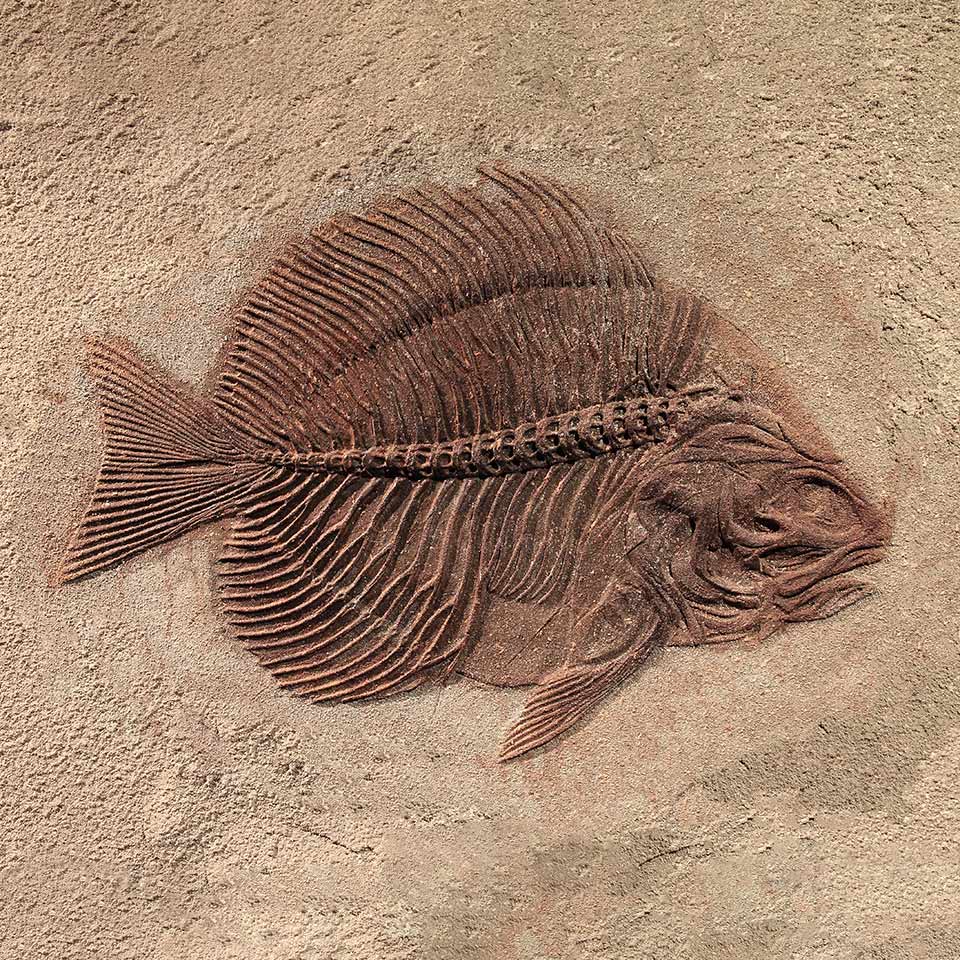Fossils provide an incredible glimpse into the distant past by preserving traces of organisms that lived millions of years ago. In this article, we’ll explore what fossils are, how they form, the major types of fossils, and take a tour of fascinating fossil sites that you can visit around the world!
Jump to:
What are Fossils and how are they Formed?
Fossils are defined as preserved remains or traces of ancient life. They are thought of as Earth’s “time capsules”, providing a window into the distant past by showing us what plants, animals and other organisms were like millions of years ago.
Most fossils were formed through a process known as permineralization, where minerals gradually replaced organic matter within buried bones, shells, leaves or imprints. Over time, this petrification transformed the remains into stone-like fossils.
Other fossils include moulds and casts that show impressions or cavities where organisms decayed, leaving behind their shapes pressed into stone. Rare original soft tissues and/or DNA are also sometimes preserved!

Types of Fossils
Body Fossils
Body fossils are the most familiar type of fossils. They encompass the preserved remains of an organism's physical structure: such as bones, teeth, shells, and even their whole bodies. They provide direct evidence of an organism's anatomy, and often reveal intricate details that allow scientists to reconstruct the creature's appearance, behaviour, and evolutionary relationships.
Trace Fossils
Trace fossils, also known as ichnofossils, provide a glimpse into the activities and behaviours of ancient organisms. Instead of preserving the physical remains of the organisms themselves, these fossils capture evidence of their movements, feeding habits, burrows, nests, and other signs of their environmental interactions. They offer valuable insights into the ecological dynamics of ancient ecosystems and the ways in which organisms interacted with one another.
Molecular Fossils
Molecular fossils, also called “biomarkers”, offer a more subtle and intricate view of ancient life. These are organic molecules that have withstood the test of time and that can be used to deduce the presence of specific types of organisms (such as bacteria or plants) even when their physical remains are no longer preserved.
Coprolites
Coprolites are a more unconventional type of fossil that provides insights into the diets and digestive systems of ancient organisms. Essentially, they are fossilised excrement – the waste products of animals that have been mineralised over time! Analysing coprolites can reveal the types of plants or animals that an organism consumed, as well as aspects of its metabolism and ecological role within its ecosystem.
Petrified Wood
Petrified wood is a captivating example of a body fossil that has undergone a unique transformation. It occurs when wood becomes mineralised: usually by being buried in sediment that’s rich in minerals. Over time, the organic material in the wood is replaced by minerals, resulting in a detailed, stone-like replica of the original wood structure. Petrified wood not only provides insight into ancient forests and plant life, but also showcases the geological processes that can transform organic materials into enduring mineralised forms.
Recommended for you!
Best SellersFascinating Fossil Sites Around the World
- La Brea Tar Pits - Los Angeles, USA
The La Brea Tar Pits represent an incredible fossil cache for Ice Age mammals that inhabited ancient North America. The naturally-occurring pools of asphalt acted like sticky traps that snared unfortunate animals. Over time, the remains of those trapped creatures accumulated, creating a unique fossil deposit. The La Brea bones provide remarkable clues into the mammals - like mammoths and sabre-toothed cats - that roamed the region during the Pleistocene epoch.
- Burgess Shale - British Columbia, Canada
The Burgess Shale in British Columbia, Canada, contains very important fossils from the Cambrian period (over 500 million years ago!). It is famous for its excellent preservation of soft-bodied creatures like worms and arthropods. For researchers, this location offers a special glimpse into early complex life from a key time when animals were just starting to diversify.
- Dinosaur National Monument - Utah, USA
Dinosaur National Monument in Utah contains a vast quarry where many dinosaur fossils have been found from the Jurassic period (around 150 million years ago). The exposed rock walls show fossils that are still stuck in the stone! Many complete dinosaur skeletons have been excavated and are now on display in the on-site museum. Major finds include Stegosaurus, Allosaurus, and Diplodocus dinosaurs.
- Solnhofen Limestone - Germany
The Solnhofen Limestone in Germany is a site of unparalleled significance, housing fossils that date back to the Jurassic period. It's famous for preserving delicate fossils with intricate details, including the iconic Archaeopteryx: an early bird and an important transitional fossil.
- Hell Creek Formation - Montana, USA
The Hell Creek area in Montana dates to around 65 million years ago. In addition to Tyrannosaurus Rex, fossils of Triceratops, duck-billed hadrosaurs, pachycephalosaurus and early mammals have been found. What makes this site so special is that it also allows us to see what the environment was like in the late Cretaceous period.
- Karoo Basin - South Africa
The Karoo Basin in South Africa is a treasure trove of Permian and Triassic fossils. It has provided significant insights into the mass extinction events that shaped Earth's history, and it showcases the evolution of early reptiles and other life forms.
- Miguasha National Park - Quebec, Canada
Miguasha National Park in Quebec is famed for having a collection of fossils from the Devonian period, around 380 million years ago. It hosts the earliest-known vertebrate fossils that ventured onto land, offering a glimpse into the evolution of tetrapods (four-legged creatures that evolved from fish).
- Messel Pit - Germany
The Messel Pit in Germany is a UNESCO World Heritage Site that’s known for its exceptional preservation of fossils from the Eocene epoch. It includes fossils of ancient horses, bats, primates and other mammal groups that were just starting to emerge, as well as the evolutionary transition into their modern forms.
- Jurassic Coast - England
England's Jurassic Coast stretches over 95 miles and spans 185 million years of Earth's history, featuring fossils from the Jurassic period. This UNESCO World Heritage Site transports you back in time by letting you view remnants of ammonites, ichthyosaurs and other prehistoric creatures.
- Siwalik Hills - Pakistan
The Siwalik Hills in Pakistan have many fossils from the Miocene era, including a variety of ape species that contributed to our understanding of how primates (such as humans) evolved. In particular, the ape species Sivapithecus, Indopithecus and Gigantopithecus have been discovered in the Siwalik deposits. These apes lived roughly 12-8 million years ago, and their fossils give us clues about ape evolution after the split between the gibbon and orangutan lineages.
If you’re eager to explore the realm of palaeontology even more, our Advanced Palaeontology Diploma Course provides a comprehensive journey into the world of fossils, evolution, and geological history, and is available for just £29 (save £98!). Whether you're an aspiring palaeontologist or are simply captivated by the mysteries of the past, this course offers an opportunity to unravel the secrets that fossils hold, and gain a deeper appreciation for the legacy they leave behind.












